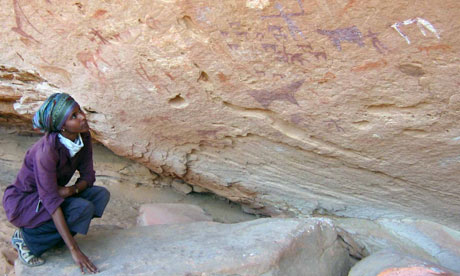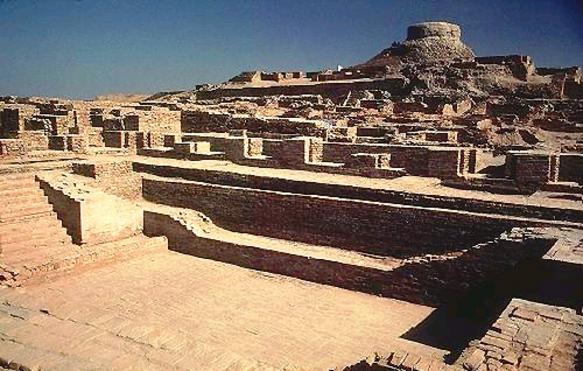On the contrary the same skull-measuring method suggests that there was at least partial replacement in the Balcans and Central Europe, where other archaeological and archaeogenetic evidence also supports such population replacement.
No information is provided for the Cardium Pottery area from Bosnia to Portugal but, considering the archaeological and genetic evidence I'd bet a lot that there was only localized population replacement as well, specially as one moves westwards. Also no information is provided for Atlantic Europe but again I daresay that there is a strong case for demographic continuity here as well.
The results show that while the initial transition to agriculture in central Europe was the result of migrating farmers from the Near-East and Anatolia, agricultural practices were adopted by indigenous hunter-gatherer populations in outlying regions of Europe. Therefore, instead of employing two competing and mutually exclusive models of biological versus cultural diffusion, a mosaic model of both biological and cultural diffusion is a more appropriate model for this demographic change across Europe as a whole.
Totally agree with this last part. I always found totally annoying that results from Germany and Poland would have to be extrapolated to the whole of Europe when the cultural dynamics were so different in the various regions and periods. This underlines a basic lack of multidisciplinary education on the part of researchers, specially some quite pretentious geneticists.
The paper is authored by Irish researchers Ron Pinhasi and Noreen von Cramon-Taubadel and will be published soon at
PNAS.
Open issues:
Where did the colonists originate? It is easy, I understand to detect changes in local population composition, but novely does not necessarily imply direct arrival from the Fertile Crescent. Actually a more nearby origin is likely instead even if there is a chain reaction of sorts.
What happened to them after that? One thing we have learned
from ancient DNA research is that there was demic replacement in Central Europe most probably with Neolithic but also that there must have been another population shift some time after it. We do not see anything like modern mtDNA pools in the area before the Urnfield Culture (late Bronze Age). What does this mean? Did proto-Celts or whoever
genocided not just the Neolithic farmers but also the early Indoeuropeans who had vanquished them first? Why do these people show a type of genetic pool apparently once common in SW Europe (high mtDNA H particularly)?
Complex stuff that I do not dare to answer, specially because the evidence is not yet comprehensive enough.
______________________________________________________________________
Update (Feb 24):
The paper is already up and freely available (thanks to Natsuya for the tip):
Interestingly the Natufian Mesolithic and the Central European Epipaleolithic ("Mesolithic") samples are totally off the chart, however all other European Epipaleolithic samples, from West and East are within the box of mainstream Westerness by all measures.
However this main group of cranial homogeneity has two clear subsets: one of Anatolian and apparent Neolithic affinities and another that includes all other European Epipaleolithic samples, as well as East European Neolithic ones. Pretty much settling the issue of the origin of Eastern European Neolithic cultures: local development based on occasional contacts, something that was already quite obvious based on archaeology as well (continuity of extended burials with ochre, rustic pottery unrelated to that of West Asian or Central European cultures, high importance of hunt until late dates).
Sadly no data is provided for any West European Neolithic, not even Mediterranean Neolithic with the rather unrepresentative exception of a Chalcolithic Sardinian sample. In this aspect this paper is no help at all.
Following the rather consistent affinities, some observations can be made:
Pan-European Epipaleolithic archetype
Among hunter-gatherers (and Eastern European Neolithics), other than the outliers from Swabia, the main standard is one including SW Europeans (Portugal, West France), a Serbian sample from Vlasac and one of the two Dniepr-Don samples (the one from the Don basin). So we can well talk of a very much homogeneous pan-European type for which the oversampled East Europeans are rather an exception, outliers, yet closer than all Anatolio-Balcano-Danubian-Danish Neolithic peoples.
Two demic flows from highland West Asia are apparent
Based on the rather consistent groupings of Neolithic peoples in the Central European strip, I think that it can well be argued that
- Most danubians (LBK) appear to be directly related to Thessalian Neolithic (Nea Nikomedia) and this one to South Anatolian neolithic (Çatalhöyuk).
- Eastern Linear Pottery (AVK, Tisza basin) peoples seem to relate best to SE Balcan Neolithic peoples (probably well represented by the Gumelnita Chalcolithic site) and Pre-Pottery Neolithic B of the Upper Euphrates.
- Some peripheral groups seem rather distinct and may suggest admixture with natives.
- The Körös group is consistently similar to Danish Neolithic peoples of TRBK (Funnelbeaker culture) and this set falls quite apart from the other Neolithic populations in the ME tree, while it falls outside the mains Euro-Anatolian set in the NJ tree. This would be probably best explained if this Hungary-Denmark affinity pre-dates Neolithic. However the only local Paleolithic sample (Vlasac in Serbia) clusters elsewhere, so maybe it means a mixed population after all. In any case I do not think anyone can argue that Körös-TRBK is a purely immigrant population on light of this data.
I tried to visually represent these notions over the map in
fig. 1:
 |
| My visual interpretation of the affinities revealed in the paper |
The solid join-the-dots blue and green lines represent most homogeneous Neolithic subclusters of apparent West Asian origin. The nearby dotted areas suggest hybrid populations at the "margins" of this Neolitic demic expansion (yet in some cases such as Körös or Lengyel, they are rather in the middle of all, not truly peripheral).
The dashed purple line of course represents the area of aboriginal Neolithic of Eastern Europe, while the dotted purple line around Denmark suggests a highly native but admixed population in that area. I failed to represent the Denmark-Körös connection however.
I also failed to represent the grouping of Lengyel, Michelsberger, LBK West, Blicze Zlote and Chalcolthic Sardinia, whose meaning I fail to comprehend (except that they are probably all admixed Anatolian-European Aboriginal peoples).

















